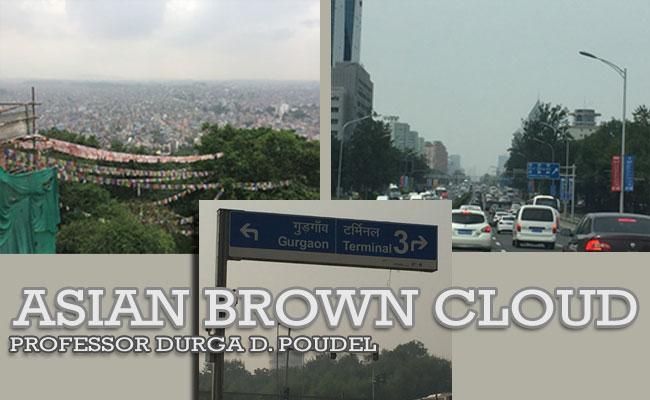Professor Durga D. Poudel, University of Louisiana at Lafayette, Louisiana, USA
I had an opportunity to attend the 23rd International Grassland Congress (IGC), November 20-24, 2015, in New Delhi, India, and experience massive air pollution in the city. I have heard about the terrible air pollution in New Delhi, but when visiting the city for about a week and directly experiencing air pollution 24-hours a day, I learned that it was something much different. There was thick haze everywhere and it was hard to read road signs even from a near distance. There were halos on the streetlights during the day. The sun behind the haze of the pollution was pale and weak in color. Living with this level of poor visibility under the blanket of brown haze and dim sunlight was very uncomfortable and suffocating. I talked to some of the participants of the IGC and learned that the diplomats are very much concerned about living in the city and the level of respiratory illnesses among city people is rising rapidly. Obviously, the causes of this pollution were vehicular and industrial emissions, thermal plants, biomass burning, and other particulate matters. While returning to the USA, it was an amazing feeling when I could see green fields, waterbodies, buildings, roads, and specks of white clouds while looking down from the plane several thousand feet above the ground as I landed in Newark Liberty International Airport in New Jersey, USA.
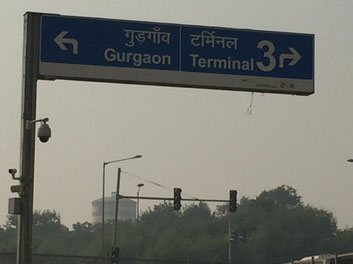 In December of 2018, I visited Kathmandu with the main purpose of understanding and preparing logistics such as hotels, transportation, etc., for our Study Abroad Pilot program that my university, the University of Louisiana at Lafayette (UL Lafayette), USA, was considering to launch during the summer of 2019 in Nepal. UL Lafayette has been running its Study Abroad Program in Costa Rica, England, France, and Italy. As usual, the city of Kathmandu was under the havoc of the worst air pollution (The picture presented here, however, was taken in May, 2019). There was a very thick haze everywhere. I could see people everywhere with facial masks. I also had facial masks with me, which I had brought from USA, while travelling across the city. It is quite uncomfortable travelling with facial masks. The fear of air pollution and health impact is so high that you do not enjoy your life fully. There were high levels of dust pollution. The level of vehicular emissions of exhaust soot was beyond imagination. The whole city was under the blanket of thick haze 24-hours and the nights were unusually cold. Maybe within a week of my stay in Kathmandu, I got so tired of the thick haze over me that I started feeling suffocated. One day, one of my friends called me and asked, “DurgaJi, should we go somewhere in the afternoon and have a cup of coffee together?” I replied to him within a fraction of a second saying, “Please take me somewhere that I can see the blue sky and breathe easily”. He picked me up from my home in Chabahill and we drove to Shivapuri Resort at Shivapuri National Park, located on the northern hill of Kathmandu Valley. I cannot describe the feeling of finally being under the blue sky, being able to see far from the top of the hill, and the joy of breathing clean air!
In December of 2018, I visited Kathmandu with the main purpose of understanding and preparing logistics such as hotels, transportation, etc., for our Study Abroad Pilot program that my university, the University of Louisiana at Lafayette (UL Lafayette), USA, was considering to launch during the summer of 2019 in Nepal. UL Lafayette has been running its Study Abroad Program in Costa Rica, England, France, and Italy. As usual, the city of Kathmandu was under the havoc of the worst air pollution (The picture presented here, however, was taken in May, 2019). There was a very thick haze everywhere. I could see people everywhere with facial masks. I also had facial masks with me, which I had brought from USA, while travelling across the city. It is quite uncomfortable travelling with facial masks. The fear of air pollution and health impact is so high that you do not enjoy your life fully. There were high levels of dust pollution. The level of vehicular emissions of exhaust soot was beyond imagination. The whole city was under the blanket of thick haze 24-hours and the nights were unusually cold. Maybe within a week of my stay in Kathmandu, I got so tired of the thick haze over me that I started feeling suffocated. One day, one of my friends called me and asked, “DurgaJi, should we go somewhere in the afternoon and have a cup of coffee together?” I replied to him within a fraction of a second saying, “Please take me somewhere that I can see the blue sky and breathe easily”. He picked me up from my home in Chabahill and we drove to Shivapuri Resort at Shivapuri National Park, located on the northern hill of Kathmandu Valley. I cannot describe the feeling of finally being under the blue sky, being able to see far from the top of the hill, and the joy of breathing clean air!
I had been dreaming for whole life visiting China and understanding more about my neighboring country in the north. It just happened this year that the Shandong University in Qingdao, China, invited me to run a one-week International Environmental Science Summer Camp called “Asian Campus Summer School”. Even though I had a busy summer with 16 students from my university participating in the Nepal Field Experience Pilot Study Abroad Program, I accepted the invitation. I arrived in Beijing in the morning of August 10, 2019, and as I was in transit waiting for my flight to Qingdao, I became quite curious about the air pollution in Beijing. The haze outside was so heavy to the point where I could not determine if it was about to rain or if it was just the air pollution. I returned to Beijing from Qingdao on August 15 and took a taxi to the A.C. Embassy Hotel, located in Embassy Area in Beijing. It was a nice about 40-minute drive. The city of Beijing had a clear and blue sky, no signs of air pollution. I was so surprised to find that what I had read about the air pollution in Beijing was much different to what I was witnessing. The next morning, I went to visit the Great Wall of China. It was a perfect picture-taking day. It appears that the typhoon that came last week helped to clear up the sky. There was a typhoon warning in the city of Qingdao when I arrived there on August 10th and I was forced to stay in the hotel all day on the 11th and 12th. August 18 had a less clear sky than the earlier two days. The 19th of August was surprisingly a hazy day in Beijing.
The presence of thick haze over Delhi, Kathmandu and Beijing should be explained with reference to the “Asian Brown Cloud”, a phrase coined by the United Nations Environment Program (UNEP) in 2002 following an extensive research known as the Indian Ocean Experiment (INDOEX), which was a very intensive atmospheric research conducted in 1999 over the Indian Ocean. The findings revealed that there is a three-kilometer-thick man-made pollution, largely from October-November to March-April in the atmosphere over South Asia, East Asia (China), and South East Asia. The “Asian Brown Cloud” later described as the “Atmospheric Brown Cloud” is mainly due to the presence of anthropogenic aerosols such as soot (mainly black carbon) and dusts produced through industrial and vehicular emissions, thermal plans or burning biomass. Sulfates and nitrates are other aerosols found in the brown cloud. The three-kilometer-thick “Asian Brown Cloud” has very strong effect on solar radiation, monsoon, precipitation, visibility, agricultural productivity, forest productivity, public health, climate change impacts, and many ecosystem services. This thick layer of brown cloud has radiation effect in the upper atmosphere resulting in temperature rise of the upper layer causing glacier melting, while there is “dimming” effect on the earth surface with many impacts including a decrease on surface temperature, reduced evaporation and precipitation, decreased monsoon, reduced vegetation growth and increased winter chills. As noticed already, the “Asian Brown Cloud” is affecting heavily the ecological and environmental systems, infrastructure, and the public in the region.
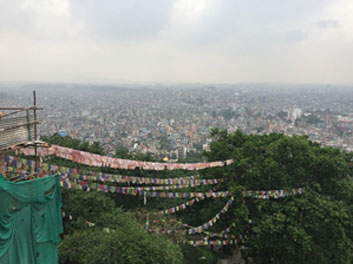 Just looking at the incidence of natural disasters in Nepal in the past five years, there is no doubt that something abnormal and alarming is happening in this country’s weather and climatic conditions. The 2014 Western Nepal flood that occurred in the month of August displaced more than 20,000 people and destroyed many houses and infrastructures. The 2017 Terai Flood which also occurred in the month of August caused a total loss of more than Rs. 63 billion destroying 41,000 houses completely and damaging 151,000 houses partially and temporarily displacing 460,000 people. The 2019 July flood killed at least 117 individuals and injured 80 people, while 38 are still missing. Thirty-two districts were affected by this flood with the displacement of at least 16,520 households with approximately 80,000 people and damaged many infrastructure, food stocks, and crops. The districts of Siraha, Mahottari, and Rautahat were very heavily impacted. Twenty four hours rainfall recorded at Simara was 12.3 inches. Besides these three recent flood events, the 1993 landslides and debris flow took 1,259 lives and destroyed many bridges and dams with a total monetary loss of more than 47,194 million rupees in 44 districts of Nepal. Although not directly related to Global Climate Change, the 7.8 Richter scale Gorkha Earthquake that occurred on April 25, 2015 caused 8,790 deaths and 22,300 injuries and destroyed thousands of villages across the 23 districts of Nepal. Researchers have reported rising temperatures, emerging diseases and parasites, declining annual rainfall, invasive plants, and melting glaciers, while villagers are experiencing dry springs, decline in water flow in springs and rivers, patchy rain events, drought conditions, high winter temperatures, declining agricultural productivity, and highly variable and unpredictable weather conditions. These incidences of natural disasters and climatic conditions warrant expedited launching of strategies and measures for climate change adaptation without any delay.
Just looking at the incidence of natural disasters in Nepal in the past five years, there is no doubt that something abnormal and alarming is happening in this country’s weather and climatic conditions. The 2014 Western Nepal flood that occurred in the month of August displaced more than 20,000 people and destroyed many houses and infrastructures. The 2017 Terai Flood which also occurred in the month of August caused a total loss of more than Rs. 63 billion destroying 41,000 houses completely and damaging 151,000 houses partially and temporarily displacing 460,000 people. The 2019 July flood killed at least 117 individuals and injured 80 people, while 38 are still missing. Thirty-two districts were affected by this flood with the displacement of at least 16,520 households with approximately 80,000 people and damaged many infrastructure, food stocks, and crops. The districts of Siraha, Mahottari, and Rautahat were very heavily impacted. Twenty four hours rainfall recorded at Simara was 12.3 inches. Besides these three recent flood events, the 1993 landslides and debris flow took 1,259 lives and destroyed many bridges and dams with a total monetary loss of more than 47,194 million rupees in 44 districts of Nepal. Although not directly related to Global Climate Change, the 7.8 Richter scale Gorkha Earthquake that occurred on April 25, 2015 caused 8,790 deaths and 22,300 injuries and destroyed thousands of villages across the 23 districts of Nepal. Researchers have reported rising temperatures, emerging diseases and parasites, declining annual rainfall, invasive plants, and melting glaciers, while villagers are experiencing dry springs, decline in water flow in springs and rivers, patchy rain events, drought conditions, high winter temperatures, declining agricultural productivity, and highly variable and unpredictable weather conditions. These incidences of natural disasters and climatic conditions warrant expedited launching of strategies and measures for climate change adaptation without any delay.
Planet Earth system consists of four subsystems: lithosphere, hydrosphere, biosphere, and atmosphere. While the lithosphere contains all the land on the surface of the earth, underneath the crust (surface), and the core of the earth, the hydrosphere contains all the solid, liquid, and gaseous water. The biosphere contains all the planet’s living things. The atmosphere contains all the air and earth systems with 78% N2, 21% O2 and 1% Other gases. The atmosphere extends from below 1 m earth surface to more than 10,000 km above the earth surface. About 96% of the 1% Other gases is Argon (a noble gas) and only 0.04% of the 1% Other gases include atmospherically active trace and heat trapping gases called the greenhouse gases. These greenhouse gases are carbon dioxide (CO2), methane (CH4), Nitrous oxide (N2O), fluorinated gases (hydrofluorocarbons, perfluorocarbons, sulfur hexafluoride, nitrogen trifluoride, etc.), nitrogen monoxide, carbon monoxide, sulfur dioxide, and carbon disulfide. These greenhouse gases are emitted from various activities including burning of fossil fuels (coal, petrol and diesel, natural gas), biomass burning, landfill sites, livestock and agricultural production, and industrial activities. The long-lived greenhouse gases such as N2O and CH4 are transported to the stratosphere (20 Km – 50 Km above the sea level) where they play roles in O3 destruction resulting in the thinning of O3 layer. The stratospheric O3 layer is necessary for blocking much of the ultraviolet radiation entering into the earth surface and regulating Earth’s radiating balance. On the other hand, in troposphere ( earth surface to 20 Km above sea level) short-lived greenhouse gases such as CO, NO2, NO react with CH4 and other hydrocarbons to form ozone, which is a pollutant causing respiratory illness and crop damages. At lower atmosphere, the reradiated sun’s energy from the Earth surface is adsorbed atmospheric gases mainly by CO2, N2O, and CH4 and cause warming of the earth surface, which is known as “Greenhouse Effect”. Both the destruction of ozone layer in stratosphere and the warming effect in the lower atmosphere by greenhouse gases are driving global climate change, resulting global warming (i.e. rise on the Earth’s surface temperature). The consistent rise on the global temperature after the Industrial Revolution (1750 – 1850 AD) has become a major threat to the Earth system including human.
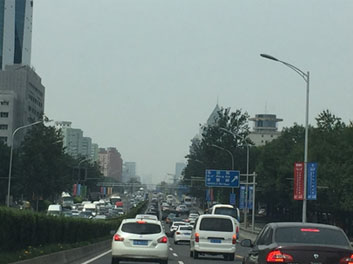 Of all the greenhouse gases, CO2 is most critical one in relation to its increasing concentration and volume as well as its atmospheric heating effect. Available literature suggests that the volume of atmospheric CO2 has increased by more than 40% compared to pre-industrial era (1750 AD) and has higher than any point in the past 800,000 years. In fact, based on the measurement of atmospheric CO2 concentration at Mauna Loa, Hawaii, USA, which was about 315 PPM in 1950’s has now reached to 410.31 PPM as of August 2, 2019. This steady increase in CO2 concentration has been very closely associated with the global temperature rise, which was below 0o C until 1940, fluctuated positively and negatively during 1940-1980, and then rising consistently above 0o C and reaching almost 1o C in 2010. Therefore, there is an urgency to check the global temperature rise, which is possible only by controlling primarily the emissions of CO2 and other GHGs. Rise on the global temperature influences precipitation, wind direction, ocean currents, and many other weather variables resulting in the changes of existing climates across the globe. Melting ice caps, sea level rise, extreme rain events, flooding, hurricanes, wildfires, droughts, and emerging new diseases and pests are clearly associated with the global warming and climate change. Climate change impacts to lands, waters, forests, food production, plant and animal species, cultural heritage sites, tourism, people’s livelihoods, public health, natural ecosystems, and many others ecosystem processes.
Of all the greenhouse gases, CO2 is most critical one in relation to its increasing concentration and volume as well as its atmospheric heating effect. Available literature suggests that the volume of atmospheric CO2 has increased by more than 40% compared to pre-industrial era (1750 AD) and has higher than any point in the past 800,000 years. In fact, based on the measurement of atmospheric CO2 concentration at Mauna Loa, Hawaii, USA, which was about 315 PPM in 1950’s has now reached to 410.31 PPM as of August 2, 2019. This steady increase in CO2 concentration has been very closely associated with the global temperature rise, which was below 0o C until 1940, fluctuated positively and negatively during 1940-1980, and then rising consistently above 0o C and reaching almost 1o C in 2010. Therefore, there is an urgency to check the global temperature rise, which is possible only by controlling primarily the emissions of CO2 and other GHGs. Rise on the global temperature influences precipitation, wind direction, ocean currents, and many other weather variables resulting in the changes of existing climates across the globe. Melting ice caps, sea level rise, extreme rain events, flooding, hurricanes, wildfires, droughts, and emerging new diseases and pests are clearly associated with the global warming and climate change. Climate change impacts to lands, waters, forests, food production, plant and animal species, cultural heritage sites, tourism, people’s livelihoods, public health, natural ecosystems, and many others ecosystem processes.
Detecting the destruction of ozone layer “ozone hole” above Antarctic, rising global temperatures, global environmental change, frequent incidences of natural disasters, and other economic and ecological degradation, the United Nations and many other agencies have worked tirelessly in bringing the global community together to tackle the problem of global climate change. They have put remarkable efforts on several environmental/climatic aspects including the understanding of the basic science behind global climate change, ban on the production of ozone depleting substances, predicting effects of climate change, providing policymakers with scientific information on climate change, and developing climate action programs over the past fifty years. Some of the major climate change initiatives taken by the UN can be listed as the creation of the UNEP, UNFCC, Conference of Parties (CoP), IPCC, and hosting annual CoP meetings. Various UN initiatives and undertakings on climate change have resulted a plethora of policy recommendations, action plans, strategies, and future paths for controlling GHGs emissions, assessment of climate change impacts, mitigation measures, adaptation to climate change, and global declarations. Among several declarations, the Montreal Protocol (1987), the Kyoto Protocol (1997), the Paris Agreement (2015), the Sendai Framework for Disaster Reduction (2015) and UN SDGs (2015) keep very high significance when it comes to global climate change, greenhouse gas reduction, adaptation, sustainable development, poverty eradication, and disaster risk reduction and mitigation.
According to 2014 IPCC report, CO2 consists of 76% of the total volume of the global greenhouse gas emissions (65% fossil fuel and industrial processes and 11% forestry and other land use), methane consists of 16%, nitrous oxide 6%, and remaining 2% is occupied by fluorinated gases. Therefore, carbon dioxide is the single most important gas from global warming point of view, however, not to undermine the importance of other gases in global warming. Global agriculture shares about 20% of the carbon equivalent emission of the three main greenhouses gases, CO2, CH4, and N2O. Published in 2018, the IPCC special report “Global Warming of 1.5o C” presents the impacts of global warming of 1.5o C above pre-industrial level, and discusses related greenhouse gas emission pathways. Mitigation measures to keep global warming as close as possible to 1.5o C include: the reduction in energy demand, decarbonization of electricity and other fuels, electrification of energy end use, deep reductions in agricultural emissions, carbon dioxide removal (CDR) with carbon storage on land or sequestration in geological reservoirs, and low energy demand and low demand for GHG-intensive consumption goods. Climate change adaptation should be undertaken while ensuring sustainable development and poverty eradication.
As the Paris Agreement sets the goal of limiting global temperature rise less than 2o C, which has already increased by almost 1o C compared to pre-industrial global temperatures, this agreement aims at climate change adaptation by developing countries with sufficient support from developed countries. The climate actions undertaken should be within the context of 2030 UN’s Sustainable Development Goals (SDGs). In addition, the Sendai Framework on disaster Risk Reduction by UN member states presents another critical element with regard to the overall success of the Climate Action and SDGs initiatives. The Sendai Framework recognizes the roles of local governments, private sector and other stakeholders in reducing disaster risk and mitigation. While both the developed and developing countries are heavily focused on the implementation of various climate change initiative and action plans, developing countries are struggling with establishing appropriate linkages between global initiatives and their national, regional, and local climate change action plans and programs. In the absence of an appropriate local framework where these global climate change initiatives and plans fit and operate smoothly, successes in local level climate change adaptation, especially by the developing countries, are far-fetched. In addition, developing countries are in the need of appropriate policy guidance, financial support, business opportunities, capacity-building, technical assistance, research and innovation, and global cooperation in relation to climate change adaptation. 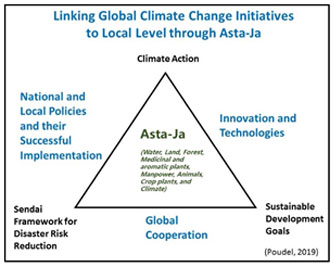
In the context of the “Asian Brown Cloud” and Global Climate Change adaptation in Nepal, as illustrated in figure 1, the Asta-Ja framework serves as a strong connector between grassroots communities and the national and global level climate change, sustainable development, and disaster risk reduction initiatives. Asta-Ja meaning eight Ja in Nepali letter “Ja”- meaning Jal (water), Jamin (land), Jungle (forest), Jadibuti (medicinal and aromatic plants), Janashakti (manpower), Janawar (animlas), Jarajuri (crop plants), and Jalabayu (climate), the Asta-Ja framework seeks sustainable conservation, development, and utilization of Asta-Ja resources for fast-paced socio-economic transformation of Nepal. The Jalabayu (climate) serves as the most critical and central driving factor for the Asta-Ja system. Any changes on weather or climatic conditions will influence all other Jas. Through the integration of Asta-Ja Framework in the implementation of climate actions, SDGs, and Sendai Disaster Risk Reduction initiatives, the local communities in Nepal will have better clarity on the relationship between the “Asian Brown Cloud”, Global Climate Change, climate change adaptation, natural resource management, income generation, and developing community resiliency. Grassroots communities, local governments, natural resource managers, businesses, and other stakeholders can relate, comprehend, and embrace the Asta-Ja Framework better. Therefore, for expedited climate change adaptation, poverty eradication, and sustainable development at the local level, a triangulated framework (fig. 1) with climate action, SDGs, Sendai disaster risk reduction and Asta-Ja Framework in the backdrop of “Asian Brown Cloud” is suggested. In addition, a strong working relationship between the countries in the region for a fight against the “Asian Brown Cloud” is necessary.

